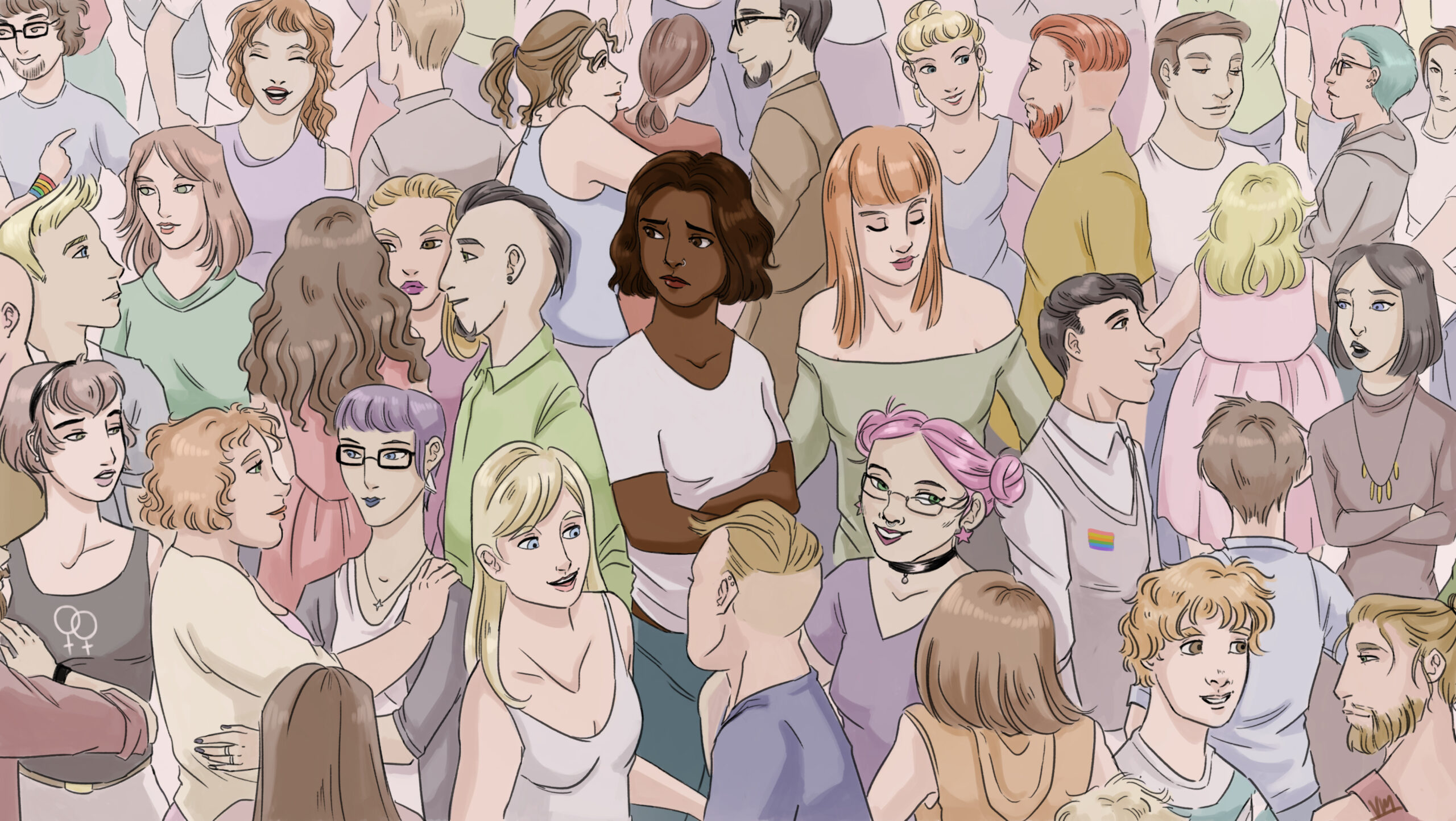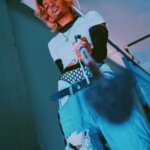For as long as I could remember, I had always known I was queer in some way.
In the way that my feelings for girls and women around me seemed to be more intense than they were supposed to, or the way that I would feel very strange if I happened to see a sexy scene of a woman in a movie.
I had always been pretty open about sexuality to my friends; I had been telling them I was questioning for so long that when I finally came out, most of my friends already knew to some capacity or another. That I had never had an issue with. What I really struggled with was that identity compared to what I saw in the mirror.
I can’t remember when it started, but at some point in elementary school, I began to hate my skin. I would avoid looking in mirrors or catching my reflection in anything in order to avoid seeing myself.
By nine, I was sure that my brown skin made me ugly. Despite the features on my face, I felt that the skin that kept them all together was holding me back from actual beauty. The internalized racism I felt was intense and affected the entire way I grew up.
Queer culture, and the alternative culture that it seemed to be intrinsically intertwined with, was dominated by white figures. It was a culture of dyed and shaved hair, flannel, and alternative relationships like relationship anarchy and polyamory.
I had immediately fallen in with it when I came upon it. I don’t think I even knew at the time that I was trying to fit into queer culture. I just wanted to wear black lipstick but whenever I tried, I felt like the rest of my face got darker around it. The actual hate I felt for myself distorted my vision, turning my face into a mask I couldn’t tear off. I used to have dreams that my face was melting in the mirror in front of me.
The movies and TV shows that featured queer characters that were available when I was growing up were always white and thin and beautiful. Even The L Word was whitewashed with Bette Porter (Jennifer Beals) as the only queer of colour in a cast almost entirely comprised of white women. I don’t think there were ever any South or East Asian women on the cast at all, much less being major characters.
When I would attend my high school’s Gay–Straight Alliance group, the room would almost be entirely filled with white folks. This would be something I would learn to expect in every queer space I’d ever enter. I would come to expect to one of the few people of colour [POC] in the room, and for a while I accepted it because queerness seemed to just be a white thing.
I hadn’t heard of queerness outside of white spaces, and the only out queers I knew were white. I thought I was an outlier; I thought I was supposed to try to be white if I wanted to accept my queerness. It didn’t occur to me that there were other queer POC hiding too.
*
For people of colour, coming out can be a hard and sometimes dangerous experience.
For many of us, we come from cultures that have been colonized and exploited by European settlers. These settlers were only able to get that power by devaluing our own religions and values and instead elevating Christianity; introducing homophobia and binarism into cultures that once celebrated sexuality.
It’s no surprise that the violence that was used to facilitate this gets handed down through our families. Some queers of colour opt to stay in the closet for years rather than coming out of the closet, or some have to enter a pseudo-closet status to maintain some kind of relationship with their families.
Before being brought to the Caribbean, my family used to be Hindus in India. I can’t tell you which parts they were from or what their history was like or anything about Hinduism, because those stories are lost to me.
My mother and my grandmother grew up thinking that Hinduism was backwards and uncivilized. But prior to the British colonization of India, sexuality and gender had already existed on a spectrum. It makes it even harder to witness the backlash that POC can face from their families.
It wasn’t until very recently that I learned about the hijra community and it struck me how similar their history sounded to the oppression faced by the Indigenous two-spirit community.
For thousands of years, trans women were referred to as hijras and were considered divine or spiritual guides. But when India came under British rule, hijra, along with other kinds of gender variance and homosexuality, became criminalized, leading to the current cultural taboo on homosexuality and gender variance. The violence and stigma they face and have faced historically is a heavy reminder of all the other cultures that have suffered under the violent hand of colonization.
I consider to have had a considerably easy time coming out to my mother, a process that took several years and many fights. The first time I came out to my mother, I told her I was questioning my sexuality and I was pretty sure I was bisexual. My mother cried and told my therapist that I needed help “figuring things out.”
After that, sexuality became a topic that was skipped over, although sleepovers weren’t allowed in my house again until I eventually promised her it was just a phase. I then had to come out to her twice after that, each time leading into a tense and uncomfortable conversation.
I remember times where white queers would console me on my relationship with my mother when they heard my coming out journey with her, but I consider it an easy journey. I didn’t have to move out to feel safe and my parents didn’t shun me.
Having to explain a story like that — speaking to the homophobia people of colour face at home — can mean throwing logs onto the fires of racism. You are either an example of your culture’s oppression or you are the mythical queer of colour. Every story becomes a lesson on your heritage, on racism, or, most often, both. You have to point out differences in privileges, differences in experiences, differences in tradition.
Worse, confiding about these incidents just becomes proof for white people to prove that they are the most progressive: erasing the histories of their ancestors killing ours over the same progressive ideologies they now support. It’s just another reason to discriminate against religious POC and another reason to call them uncivilized.
These are some of the reasons why queer spaces can be uncomfortable for queer people of colour — and why they need a space where they can meet each other and they can talk about these experiences.
“Since our culture has made being queer a taboo, I feel like a lot of queer brown kids are hiding. It’s really rare to meet another south Asian queer kid,” said Anusha, a South Asian lesbian from Toronto and a close friend of mine. “It’s nice to know that someone else in your culture gets you. I know other POC queers are dealing with similar experiences, but we don’t tend to handle this stuff well.”
We don’t face the same coming out stories and the same dating stories as white queers do. I didn’t just move out of the suburbs and suddenly find my place in the queer community. Even with online dating, it seemed impossible that I was even attractive to other queers, and later as I did find other POC, it seemed that our attractiveness correlated to how dark we were.
I began to think that it was because queerness was inherent to whiteness. I thought that they were more progressive, and that POC were just too backwards to get with the times. The same way that I thought the way my mother spoke was uncivilized, I thought my family was too ignorant to understand queerness. Then I started to learn about my family’s history, colonization, and forced migration.
For me, I wasn’t able to really connect to my queerness until I started to connect to my roots and history. It wasn’t until I met other brown and Black and Indigenous queers that I started to feel at home in my skin and my gender and sexuality. And I couldn’t understand how radical it was just to love my queerness as a brown person until I understood the violence it took to put me here. I needed to surround myself with queers who looked like me, whose families spoke like mine, held beliefs like mine.
I no longer separate my queerness from my brownness. Now I understand that I can’t separate these two pieces of me and I wouldn’t want to. Just like how I can’t separate my queerness or my gender from my identity, I can’t stop being West Indian. I tried to for a very long time, but I didn’t find home in myself until I stopped trying to be something I wasn’t.
I’d never be at home in my skin if I wasn’t surrounded by beautiful Black and brown queers who found me beautiful too.
Mari Ramsawakh is a freelance writer, podcast producer, and angry disabled non-binary queer. They have been published on The Establishment and xoJane. They also have just started a podcast called Sick Sad World to explore true crime from an intersectional lens.


 Why you can trust Xtra
Why you can trust Xtra


